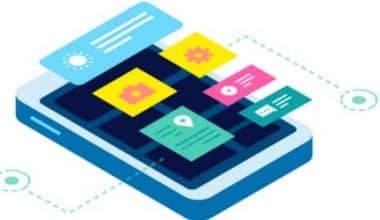Are you thinking about implementing business intelligence software? Then you’ll be relieved to learn that there are numerous solutions available on the market. Business intelligence (BI) tools are all about assisting you in understanding trends and gaining insights from your data in order to make tactical and strategic business choices. They also assist you in seeing trends in the masses of data that your business generates. But how can you know which business intelligence software is ideal for your business? And which tools will assist you in achieving your online objectives? Here’s an explanation of how business intelligence software works, as well as a review of the top 10 BI tools in 2023.
What is Business Intelligence Software?
Implementing analytics software has been a major undertaking for companies experiencing a digital transformation, and business intelligence (BI) tools are the most common analytics tools used in companies. These BI tools and software aid in the visibility of a company’s data. Employees that can perceive and understand business data can make better decisions and have a beneficial impact on the organization. With the quantity of data available to businesses today, it is almost a need that they need to deploy BI software to better comprehend and act on that data.
The Most Important Benefits of Business Intelligence Software
- Easily visualize and comprehend corporate data
- Connect all of the company’s data sources into a single platform to facilitate cross-departmental collaboration.
- In order to improve business performance, encourage data-driven decision-making.
- Discover new insights that can help your bottom line.
What Are the Various Types of Business Intelligence Software?
There are several types of business intelligence (BI) software and tools, each with overlapping capability but ultimately catering to a particular user or providing distinct services.
#1. Business Intelligence Platforms
Business intelligence platforms are the most frequent sort of BI tool. Data analysts and scientists utilize BI platforms as comprehensive analytics tools. They frequently necessitate some kind of coding or data processing expertise. These systems connect to databases, data warehouses, or big data distributions and allow analysts to experiment with data to identify insights.
Some BI platforms provide advanced analytics capabilities like predictive analytics, big data analytics, and the capacity to process unstructured data. Furthermore, while BI systems may have the self-service capability to allow ordinary business users to use the tool, they are primarily intended for usage by data and IT teams.
#2. Self-Service Business Intelligence Software
Self-service business intelligence software is crucial for companies interested in developing a data-driven culture. Because self-service business intelligence software and tools do not require coding knowledge, they can be used by business end users. These systems frequently include drag-and-drop capabilities for creating dashboards, prebuilt query templates, and possibly even natural language querying for data discovery.
These tools, like BI platforms, are used to create interactive dashboards for uncovering actionable insights. This enables non-data team members such as sales representatives, human resource managers, marketers, and others to make data-driven decisions. This saves the user, administrator, and data team time.
#3. Embedded Business Intelligence Software
Some software may allow you to embed analytics capability within other business applications. These are frequently the same suppliers who provide BI platforms and self-service business intelligence software. They generate revenue by letting developers incorporate their unique business intelligence products within other applications.
Businesses can promote user adoption by implementing an embedded business intelligence solution. Companies may assist ensure staff is taking advantage of accessible data by embedding analytics within commonly used software. These systems give self-service capabilities so that regular business end users may use data to make better decisions.
#4. Data Visualization Software
If a business only wants to track key performance indicators (KPIs) and other essential metrics, it can utilize data visualization software. Users can use these solutions to create dashboards that track organizational goals and KPIs in real-time. They do not, however, allow users to drill down into the data to gain deeper insights.
Understanding where a firm or team is in business to certain company goals and KPIs allows them to focus their efforts in specific areas to attain those goals. These solutions provide various KPI dashboards, allowing each team to create visualizations for their particular goals. These tools, like all other business intelligence tools such as databases and business applications, can consume data from a variety of sources.
#5. Software for Location Intelligence
Location intelligence software, often known as spatial intelligence, is a subset of business analytics that gives insights based on maps and spatial data. These tools assist users in determining correlations between things’ physical locations. Similar to how a user might use a BI platform to uncover trends in financial or sales data, data analysts can utilize location intelligence tools to decide the best site for their next restaurant or warehouse. This software is frequently utilized independently of a business intelligence tool or in conjunction with current analytics tools.
A Detailed Review of The Best BI Software and Tools on The Market
We chose the top ten BI software that is a leader in the business intelligence field, frequently featured in industry articles, and have received excellent user evaluations on Capterra and G2Crowd, as previously indicated. The sequence of the tools is arbitrary and does not reflect a grading or ranking. Top 10 Business Intelligence Tools and Software for Business Intelligence include;
- Google Analytics
- BIG EVAL
- Yellowfin tuna
- Netsuite
- Simple Analytics
- SAP Business Innovation
- Microstrategic Planning
- BOARD
- Pentaho
- Jaspersoft
- QlikView
#1. Google Analytics
Zoho Analytics is a platform for self-service business intelligence and analytics. It enables users to quickly construct intelligent dashboards and graphically analyze any data. It has an artificial intelligence-powered assistant that allows customers to ask inquiries and receive intelligent answers in the form of useful reports.
Key Features Include:
- There are over 100 pre-built connectors for key business programs, cloud storage, and databases.
- Charts, pivot tables, summary views, KPI widgets, and custom-styled dashboards are among the many visualization choices.
- Unified business analytics analyzes data from several business apps.
- AI, ML, and NLP are being used to augment analytics.
- White label business intelligence portals and embedded analytics solutions
#2. BIG EVAL
BiG EVAL maximizes the value of enterprise data by validating and monitoring information quality in real-time. It also automates testing procedures throughout the generation of reports and analyses. The innovative automation approach and user interface ensure same-day benefits.
Features:
- Data quality measurement and testing on autopilot, powered by metadata.
- Algorithms, rules, and test behavior are completely adjustable.
- Hundreds of best practices validation templates are available in a gallery for your usage.
- Analyze deep insights using clear dashboards and alerting mechanisms.
- Integration with hundreds of tools (including Jira, ServiceNow, Slack, Teams, and others).
- DataOps procedures and DevOps CI/CD flows can be integrated.
- Hundreds of data connections (RDBMS, APIs, Flatfiles, Business apps, SaaS…)
#3. Yellowfin tuna
Yellowfin is a global analytics and business intelligence (ABI) software vendor with a spectrum of world-class automation-powered products. It is designed for decision-makers, enables more people to see, analyze, and act on their data through data storytelling, collaboration, and visually beautiful action-based dashboards.
It features five primary products that are all closely integrated into a single analytics platform for creating, deploying, and managing analytics across the company, as well as full white-labeling support.
Features:
- Dashboards with actions that dynamically alert users with relevant information
- Technologies such as automated business monitoring (ABM), machine learning, and natural language query (NLQ) are being used to augment analytics.
- Simple drag-and-drop report and data visualization creator
- Tools for collaboration and data storytelling
- Connectors for JDBC databases, XML/A, CSV, and third-party sources such as SFDC, Google Analytics, and others provide self-service data preparation.
- Support for white-labeling for seamless OEM BI for standalone or embedded analytics
#4. Netsuite
Netsuite SuiteAnalytics is a simple business intelligence solution that delivers real-time visibility into the operational and financial performance of a firm across all business areas. It assists you in identifying trends and providing actionable information to help your business flourish.
Features:
- Improve communication and streamline reporting processes.
- Allows you to include business performance information in your dashboards and key performance indicators (KPIs).
- Allows you to distribute data to analysts and decision-makers without relying on IT.
- Allows you to develop valuable business insights by combining data and visual analytics.
- Reduce cycle times, involve business users, and improve your planning process.
- Reduces the time required to consolidate and reconcile data.
#5. Simple Analytics:
Clear Analytics is a solution for providing accurate, timely, and clear business information. This business intelligence tool aids in the fulfillment of business requirements. This BI solution makes it simple to extract big amounts of data from trusted sources and show it in the form of professional reports.
Features:
- It offers software solutions that use fewer human resources.
- Design of a dashboard
- Data visualization using graphics
- Indicators of Key Performance
- Issues are easily identified.
- Aids in the development of strategic planning
- It provides predictive analysis.
#6. SAP Business Innovation:
SAP BI is a Business Intelligence software suite. It is a high-end application for open client/server systems. It has established new benchmarks for delivering the best business information management solutions.
Features:
- It offers highly adaptable and transparent business solutions.
- SAP-developed applications can integrate with any system.
- It adheres to the modular principle for ease of setup and space utilization.
- enables the development of a next-generation database system that integrates analytics and transactions
- Provide assistance with on-premise or cloud deployment.
- Data warehouse architecture has been simplified.
- Integration with SAP and non-SAP applications is simple.
#7. Microstrategic Planning:
MicroStrategy is a software analytics platform. It enables people to make better judgments and alter their business practices. It provides the most sophisticated and predictive analytics.
Features:
- Predictive and advanced analytics
- Intelligence in business
- Simple to use and maintain
- High-quality business intelligence
- Analytics as a service
- Solutions for big data
- Software as a service (SaaS)
- WYSIWYG report creation in real time
- Dashboards and scorecards
- Corporate reporting
#8. BOARD:
Board is a Business Intelligence Toolkit. It combines business intelligence and corporate performance management components. It is intended to provide both business intelligence and business analytics in one package.
Features:
- Using a single platform, you can analyze, model, plan, and predict.
- to create personalized analytical and planning applications
- Board All-In-One integrates BI, CPM, and business analytics.
- It enables companies to create and maintain sophisticated analytical and planning systems.
- By allowing access to numerous data sources, the proprietary platform aids in reporting.
#9. Pentaho:
Pentaho is a platform for data warehousing and business analytics. It is one of the top Business Intelligence tools, allowing business users to access, discover, and merge data of all types and sizes.
Features:
- Enterprise platform for data pipeline acceleration
- The Community Dashboard Editor enables rapid development and deployment.
- Integration of big data without the need for coding
- embedded analytics simplified
- Create bespoke dashboards to visualize data.
- MongoDB operational reporting
- Data pipeline acceleration platform
#10. Jaspersoft
Jaspersoft is an open-source business intelligence application. Every day, it enables people all across the world to make better decisions. It offers business intelligence solutions that are adaptable, cost-effective, and widely adopted. It improves decision-making by providing highly interactive Web-based reporting, dashboards, and analysis.
Features:
- It provides data visualization, reporting, and data integration.
- It may be linked to any mobile app, allowing users to access data from any location.
- Aids decision-making by utilizing key performance indicators and issue indicators.
- SaaS, on-premise, and cloud platforms are all available.
#11. QlikView
Qlik enables the development of infographics, dashboards, and apps. It is one of the greatest BI reporting tools for viewing the whole story contained within data.
Features:
- Drag-and-drop interfaces for creating versatile, dynamic data visualizations
- To navigate complex information, use natural search.
- Respond to interactions and updates in real-time.
- Multiple data sources and file kinds are supported.
- It enables simple data and content security across all devices.
- It uses a centralized center to communicate relevant analyses, including apps and news.
How Do You Select Business Intelligence Software and Tools?
When choosing your BI software tools, keep the following five stages in mind:
#1. Examine your current data sources.
Obviously, any new solution must use existing data from your organization. It will either accomplish this automatically or you will have to map data structures and conduct conversions manually. It is nearly hard to establish what BI platform to utilize and what is involved with the move without knowing what data exists and where it lives.
#2. Determine your goals.
If you want to take your business intelligence and data analytics to the next level, you must first determine the features you require before looking for a good match. Do you, for example, want to extend the use of BI to additional groups or departments? What kinds of reports and data visualizations do you need?
#3. Determine whether additional data sources can improve business outcomes.
The addition of features and capabilities is the main rationale for adopting a more powerful BI platform. Do you want to connect cloud repositories or different enterprise systems? Do you want to collaborate with edge computing companies to expand data collecting across a supply chain? These are basic questions to ask when hiring a provider.
#4. Examine the vendor landscape.
Naturally, suppliers and software solutions approach business intelligence in fundamentally different ways. Is the vendor focused on on-premises or just on the cloud? As a result, matching needs with vendor features, support framework, and roadmap is crucial in selecting a solution. It is critical to assess which vendor can extract the most value from your data, assist business change, and provide value in the future.
#5. Recognize the modifications that are required.
Any significant endeavor, including BI, necessitates modifications to both IT infrastructure and business processes. As a result, it’s critical to match your organization’s goals, desires, and expectations with the correct BI solution—and to ensure that it provides the ability, flexibility, and scalability required to traverse today’s rapidly changing business environment.
Conclusion
Big data is all around us and getting bigger by the year. With the multiple capabilities that BI and business analytics tools have to offer, you stand to reap significant tools – your data management will become more coherent, reliable, adaptable, and predictable. We sought to assist you in evaluating the top tools on the market, and we hope that we have offered an in-depth assessment of each product that will motivate you to begin investigating business intelligence tools and finding a great fit for your organization or department.
To assist you in processing and remembering all of the information you have just received, we have provided a graphic breakdown of the top 10 best business intelligence tools and software for 2023.
Business Intelligence Software FAQs
Is Excel a business intelligence tool?
While Excel is not the only program that provides formulae and pivot tables for business intelligence, it is one of the most widely used BI tools.
What are the 4 concepts of business intelligence?
- The main data raw data)
- The warehouse.
- Data access, analytics, and presentation.
- Data dashboarding and reporting.
Does business intelligence need coding?
Coding is required in Business Intelligence (BI) to process data and provide relevant insights. Coding is utilized in the BI project lifecycle stages of data modeling and warehousing. On the other hand, coding is not necessary for the other stages of the BI lifecycle. Anyone with programming experience can begin a career in business intelligence.
Related Articles
- BUSINESS INTELLIGENCE (BI): Definition, Importance, Tools & Benefits
- Business Intelligence Analyst: Job Description, Certifications & Salary In the US
- Financial Intelligence: Babysteps to Proper Mastery (+ How to guide & Detailed courses)
- Customer relationship: Everything you need to know (+ free strategy plan)
- Business Software: 27+ Best Software & Programs For Your Small Businesses






